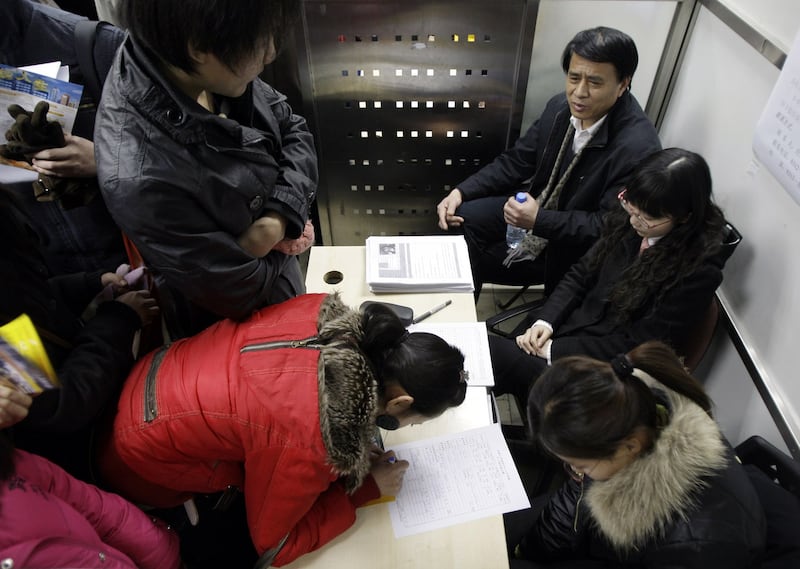China’s latest economic indicators for manufacturing and services continue to flash weakness, amid numerous drags on any possible turnaround. Beijing has signaled it’s aware it needs to restore confidence but shows limited appetite to put its money where its mouth is.
On Monday, Beijing issued 20 measures to boost domestic consumption, including support for real estate and auto sales, state media reported. Economists were skeptical that tinkering, in the form of limited incentives for consumer spending and business lending, would be enough to turn China's stagnating economy around.
The National Development and Reform Commission said the measures were focused on stabilizing consumption of so-called “big-ticket” items, such as housing and cars.
The commission also said it aimed to expand the consumption services, stimulate rural consumption and boost cultural and tourism consumption, without providing much in the way of detail as to how such market shifts would take place.
"These measures don't make it look like the central government is planning to pay for any of this," Michael Pettis, an economist at the Carnegie China Center, told the New York Times.

Broader challenges are now well known and recognized: youth unemployment that may be worse than advertised, deflationary pressures and a housing market that continues to be in the doldrums.
Put simply, post-COVID, the Chinese economy is out of kilter with global trends.
The post-pandemic bounce-back evaporated with the onset of summer this year and on Monday the National Bureau of Statistics said its purchasing managers index is now in contraction for four straight months.
Economic numbers have been so dismal – at least by China’s past roaring-growth standards – that in March China’s National Bureau of Statistics halted the release of monthly readings of consumer confidence for the first time in 33 years.
The world’s second largest economy is in decline and its masters appear to be reluctant to materially act to fire it up.
The rub
The Chinese government and the Communist Party have spared no breath in repeating the mantra of commitment to facilitating spending and making it easier for businesses to access spending.
But the rub is – in contrast to previous downturns – a patent lack of zeal for stimulus, cash subsidies and infrastructure spending.
At a news conference on Monday, Li Chunlin, vice chairman of the National Development and Reform Commission, acknowledged that consumers were wary. "Some consumers lack confidence and have many concerns," he said.
But, given the commission has made no stimulus commitments, China-focused economists suspect that any stimulus is likely to devolve onto already cash-strapped local government budgets.
Local governments China-wide heavily indebted themselves in the heyday of an infrastructure boom in the aftermath of the Global Financial Crisis, and over the past few years found themselves shouldering the burden of China’s punitively expensive COVID-19 mitigation efforts, which not only involved repeat mass testing but also the building of sprawling quarantine centers.
According to one report, "Many are struggling to pay civil servants' salaries and interest on debts, much less to pay for new consumption subsidies."

Meanwhile, writing on X, formerly known as Twitter, Carnegie economist Pettis said that the only way to ultimately achieve a consumer-powered rebound was for consumers – households – to have a greater share of national GDP, something the Beijing government shows no sign of being willing to bring about, and local governments almost certainly can't.
“The easy prediction is that while over the short term we might see temporary variations in consumption rates (especially if we ever do get the long-awaited partial reversal in the COVID-related contraction in consumption),” Pettis wrote.
“[But] over the medium and longer terms, the only way ... consumption will play a greater role in the economy is if there is an increase in the relative share ordinary households retain of China's GDP.
“Of course, that requires a reduction in the government share, and that's what makes it so difficult to implement.”
The specter of deflation
The question, given the economy’s current state of play, is whether 2023 will be the year that ushers in what some economists call the coming Japanification of China.
The rest of the world may be fixated on the specter of inflation, but China appears to be grappling with the opposite: a long run of falling prices that run the risk of sapping business profits, eroding consumer confidence and putting increasing numbers of people out of work, in what could become a vicious cycle of the kind that saw the Japanese economy stagnate for several decades from the late 1980s.
A collapse in stock markets and real-estate values in Japan in the early 1990s led businesses and households to pay down debt rather than spend, leading to what is now known as a balance-sheet recession.
"The big concern is whether the policy tools that they have will have much traction in terms of trying to avert deflation, or deal with deflationary pressures once they arrive," Eswar Prasad, a professor of trade policy and economics at Cornell University and a former head of the International Monetary Fund's China division, told the Wall Street Journal.
It’s still possible that China could escape further deflation if the economy gets a kickstart in the form of government stimulus, but so far the government shows no sign of being ready to grit its teeth and take action.
Stocks rallied on Monday due to the new measures announced by the commission, which were seen by investors as a positive signal the government is taking the economy seriously, Bloomberg reported.
"Having been disappointed by a lack of policy execution repeatedly in the past, investors are hoping things will be different this time," wrote Pettis.
Edited by Mike Firn and Taejun Kang.
